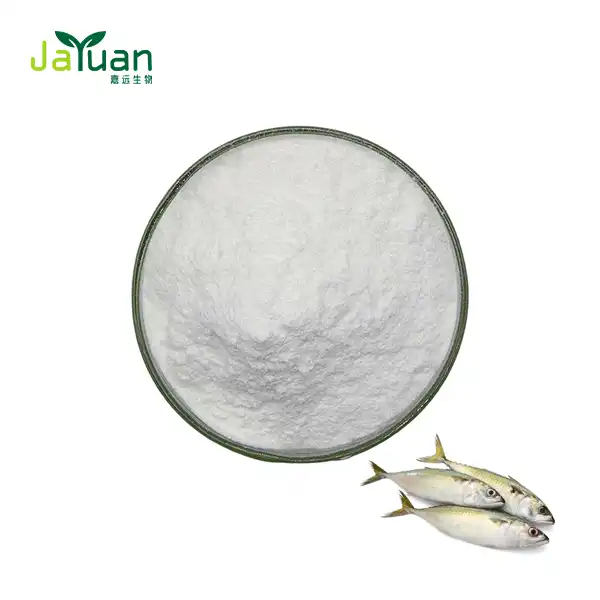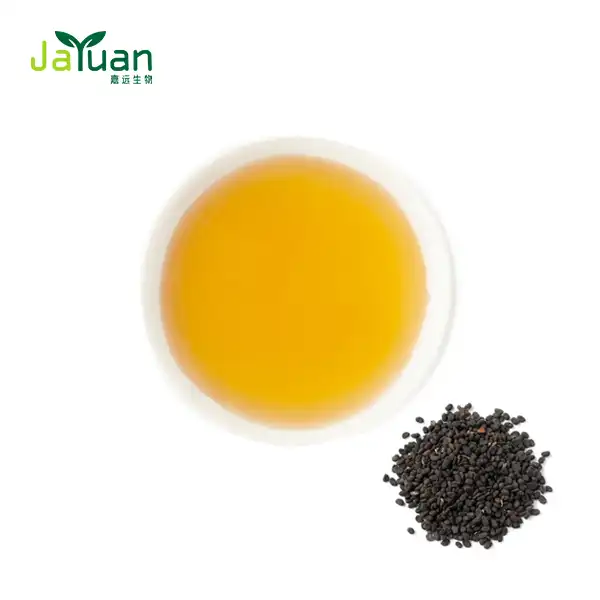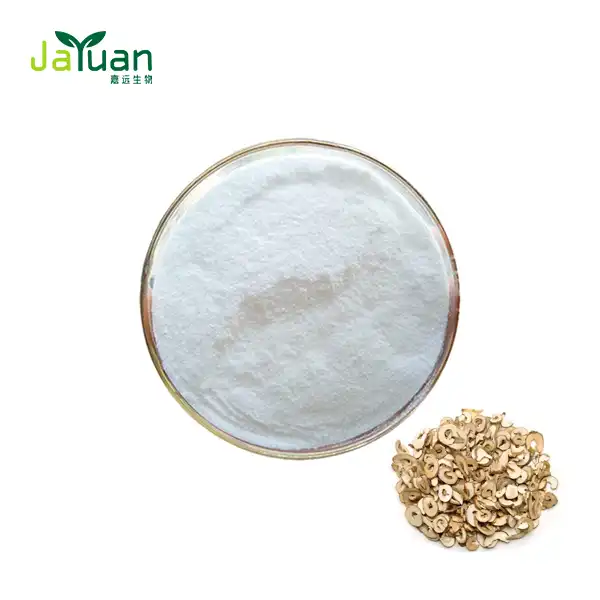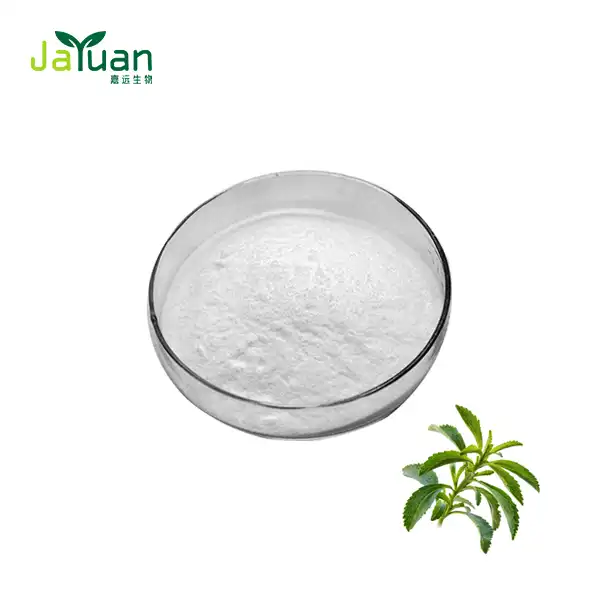Is Turkesterone Natural?
Introduction
Turkesterone, a popular supplement in the fitness and bodybuilding communities, has garnered significant attention for its potential muscle-building properties. Turkesterone powder is a natural supplement that is reputed to promote muscle growth, enhance performance, and support recovery.But a crucial question often arises: is Turkesterone natural? To understand this, we need to delve into its origins, extraction processes, and how it fits into the broader category of natural supplements.

The Origin of Turkesterone
Turkesterone is an ecdysteroid, a type of steroid hormone found in plants and insects. It is most commonly extracted from the Ajuga turkestanica plant, which is native to Central Asia, particularly Uzbekistan. Ecdysteroids are known for their anabolic effects, promoting protein synthesis and muscle growth in animals and possibly humans.
The Ajuga turkestanica plant has been used for centuries in traditional medicine for its supposed health benefits, including enhancing physical performance and recovery. This historical use lends some credibility to Turkesterone being a natural compound with potentially beneficial effects.
Extraction and Production
Turkesterone, a bioactive compound found in plants like Ajuga turkestanica, has gained attention for its potential health benefits. The extraction and production process of Turkesterone involves several steps to obtain a purified form suitable for use in supplements and other applications.
The first step in the extraction process is the collection of Ajuga turkestanica plants, which typically grow in certain regions of Central Asia. Once harvested, the aerial parts of the plant, such as leaves and stems, are separated from the roots. These aerial parts are rich in Turkesterone content and serve as the primary source for extraction.
Next, the collected plant material undergoes a drying process to reduce moisture content, ensuring the stability and preservation of the active compounds. Drying can be achieved through methods such as air drying or low-temperature drying, which help maintain the integrity of the Turkesterone molecules.
Once dried, the plant material is subjected to grinding or milling to increase its surface area, facilitating efficient extraction. Fine particle size is desirable as it allows for better contact between the plant material and the extraction solvent.
The extraction of Turkesterone from the plant material is typically performed using organic solvents such as methanol or ethanol. The finely ground plant material is mixed with the chosen solvent and subjected to extraction methods like maceration, reflux, or sonication. These techniques aid in breaking down the plant cell walls and promoting the release of Turkesterone into the solvent.
After extraction, the resulting solution is filtered to remove any solid particles or impurities. Filtration ensures the purity of the extracted Turkesterone, making it suitable for further processing and analysis.
The final step in the production of Turkesterone involves concentration and purification. The solvent used for extraction is evaporated under reduced pressure or through other methods like freeze-drying or spray-drying. This concentrates the Turkesterone extract, yielding a more potent and manageable product.
To ensure the purity and quality of the Turkesterone extract, further purification steps may be employed. Techniques such as chromatography, crystallization, or recrystallization can be utilized to remove any remaining impurities, resulting in a highly purified form of Turkesterone.
The extracted and purified Turkesterone is then typically formulated into various products, including dietary supplements, sports nutrition formulations, or pharmaceutical preparations.
In conclusion, the extraction and production of Turkesterone involve collecting the Ajuga turkestanica plant, drying and grinding the aerial parts, extracting the compound using organic solvents, filtering, concentrating, and purifying the extract. These processes ensure the availability of a purified form of Turkesterone for use in different applications aimed at harnessing its potential health benefits.
Comparing Natural and Synthetic Supplements
When discussing the naturalness of Turkesterone, it's essential to compare it with synthetic supplements. Synthetic steroids and hormones are chemically manufactured to mimic natural compounds. They often come with a higher risk of side effects and legal restrictions.
In contrast, Turkesterone, derived from a plant source, is considered a natural supplement. Its natural origin is one of its main selling points, especially for individuals seeking alternatives to synthetic anabolic steroids. However, the perception of what constitutes "natural" can vary. Some purists might argue that any form of processing detracts from a substance's natural status, but in the context of dietary supplements, Turkesterone's plant-based origin qualifies it as natural.
Scientific Evidence and Studies
Several studies have investigated the effects of Turkesterone and other ecdysteroids. Research has shown that ecdysteroids can promote muscle growth, improve physical performance, and enhance recovery without the side effects typically associated with synthetic steroids.
For example, a study published in the journal Biology of Sport found that Turkesterone supplementation in athletes led to significant improvements in muscle mass and strength compared to a placebo group. Another study in Phytomedicine highlighted the adaptogenic properties of Turkesterone, suggesting it helps the body resist stress and fatigue.
These studies support the notion that turkesterone raw powder, derived from a natural source, can provide substantial benefits, reinforcing its status as a natural supplement.
Safety and Side Effects
One of the key advantages of natural supplements like Turkesterone is their safety profile. Unlike synthetic anabolic steroids, which can cause a range of adverse effects such as liver damage, hormonal imbalances, and cardiovascular issues, Turkesterone is generally considered safe when used appropriately.
That said, it's crucial to approach any supplement with caution. While natural, Turkesterone can still interact with other medications or health conditions. Therefore, it's advisable to consult with a healthcare professional before starting any new supplement regimen.
Turkesterone in the Market
The market for Turkesterone supplements is growing rapidly, fueled by its reputation as a natural alternative to synthetic steroids. Many brands emphasize its natural origin, highlighting the plant-based extraction process and the historical use of Ajuga turkestanica.
When purchasing Turkesterone, it's important to choose reputable brands that provide transparency about their extraction methods and purity standards. Look for third-party testing and certifications that ensure the product contains genuine Turkesterone and is free from contaminants.
Regulatory Considerations
To summarize, testosterone acts by animating protein union, raising nitrogen maintenance, and turning on the mTOR pathway, which brings about expanded muscle development, better games execution, and faster recuperation.
The studies that are currently available confirm its use as a useful supplement for bodybuilders and athletes, despite the fact that scientific research is still in its early stages.
Conclusion
Based on its plant origin, historical use, and the extraction process that maintains its natural form, Turkesterone can be classified as a natural supplement. Its benefits, supported by scientific studies, make it a viable alternative to synthetic anabolic steroids for those seeking muscle growth and enhanced performance.By understanding the natural origins and benefits of Turkesterone Powder, we can make informed choices about its use and potential in enhancing physical performance naturally.
However, as with any supplement, it's essential to use it responsibly and consult with healthcare professionals to avoid potential interactions or side effects. For more information about Turkesterone and its benefits, feel free to contact us at sales@jayuanbio.com.
References
1.Syrov, V. N. (2000). Comparative experimental investigation of the anabolic activity of ecdysteroids and steranabols. Pharmaceutical Chemistry Journal, 34(4), 193-197.
2.Gorelick-Feldman, J., MacLean, D., Ilic, N., Poulev, A., Lila, M. A., & Raskin, I. (2008). Phytoecdysteroids increase protein synthesis in skeletal muscle cells. Journal of Agricultural and Food Chemistry, 56(10), 3532-3537.
3.Slama, K., & Lafont, R. (1995). Insect hormones: Ecdysteroids: Their presence and actions in vertebrates. European Journal of Entomology, 92, 355-377.
4.Lafont, R., & Dinan, L. (2003). Practical uses for ecdysteroids in mammals including humans: An update. Journal of Insect Science, 3(1), 7.
5.Chermnykh, N. S., Shimanovskiĭ, N. L., Shutko, G. V., & Syrov, V. N. (1988). The effect of methandrostenolone and ecdysterone on the physical endurance of animals and on protein metabolism in the skeletal muscles. Farmakologiia i Toksikologiia, 51(6), 57-60.
6.Báthori, M., & Pongrácz, Z. (2005). Phytoecdysteroids: structure, occurrence and biological activity. Mini Reviews in Medicinal Chemistry, 5(3), 285-304.
7.Dinan, L., Savchenko, T., & Whiting, P. (2001). On the distribution of phytoecdysteroids in plants. Cellular and Molecular Life Sciences CMLS, 58(8), 1121-1132.








